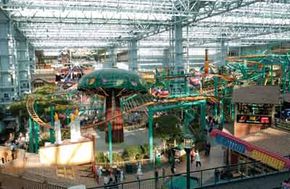Key Takeaways
- A covered city is a concept involving the construction of a protective structure over an existing urban area to shield it from adverse weather conditions, pollution and other external threats.
- These structures can range from transparent domes to retractable roofs, providing residents with a controlled environment while preserving outdoor elements.
- While the idea presents benefits such as improved air quality and weather resilience, challenges include cost, feasibility and environmental impact.
There's a very funny conversation that happens between Calvin and Hobbes in one of their comic strips. It goes like this:
Hobbes: A new decade is coming up.
Advertisement
Calvin: Yea, big deal! Humph. Where are the flying cars? Where are the moon colonies? Where are the personal robots and the zero gravity boots, huh? You call this a new decade?! You call this the future?? Ha! Where are the rocket packs? Where are the disintegration rays? Where are the floating cities?
Hobbes: Frankly, I'm not sure people have the brains to manage the technology they've got.
Calvin: I mean, look at this! We still have the weather?! Give me a break!
CALVIN AND HOBBES © Watterson. Reprinted with permission of UNIVERSAL PRESS SYNDICATE. All rights reserved.
People think about domed cities because, as Calvin points out, we haven't figured out a way to control the weather. If everywhere in the world could have weather like San Diego, it probably wouldn't be an issue. Unfortunately, in big cities like Buffalo, Minneapolis, New York and Chicago, the weather is decidedly NOT San Diego -- especially in the winter!
The goal of a domed city is to take a large urban area and cover it so that:
- The temperature is the same year round.
- There's never any rain or snow to spoil picnics and weddings.
- The cancerous effects of the sun are eliminated during outdoor activities.
Read on to see if these domed cities have ever been attempted before.
Advertisement


